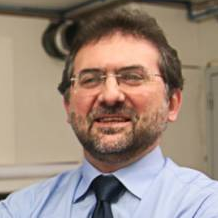Catalytic Materials for Application in Water Purification
A special issue of Catalysts (ISSN 2073-4344). This special issue belongs to the section "Environmental Catalysis".
Deadline for manuscript submissions: closed (31 December 2021) | Viewed by 5682
Special Issue Editors
Interests: wastewater treatment; advanced oxidation processes; environmental catalysis; materials surface characterization; LED photocatalysis; oxide ceramics; catalysts; perovskites; thin films; electronic microscopy
Interests: advanced oxidation processes; biological treatments; environmental chemistry; emerging chemical contaminants; inactivation of pathogens; water reuse and circular economy
Special Issues, Collections and Topics in MDPI journals
Interests: catalysis and photocatalysis; chemical emergent systems for environment, energy, and fine chemistry; physical-organic chemistry; chemistry and materials science; spectroscopic techniques; advanced oxidation processes; solar fuels; nanotechnology and nanoscience; biophysics and biochemistry; chemical education and science communication; chemical engineering
Special Issues, Collections and Topics in MDPI journals
Special Issue Information
Dear Colleagues,
Water is an essential compound for all forms of life. Its quality is critical for the future of humankind. Many water sources are close to exhaustion, while others are prone to pollution because of intense human or industrial activity. Water purification is an essential process for safe drinking, industrial applications, wastewater treatment, and environmental sustainability. Many of these purification processes involve homogeneous or heterogeneous catalysis, with or without the complementary use of UV light, ozone, chlorine, or other oxidants.
Besides, water purification provides a reduction in the water footprint, as it is possible to recycle and reuse into industrial or municipal processes.
Authors dealing with the successful use of catalysis or photocatalysis in water purification are cordially invited to submit their manuscripts to this Special Issue of Catalysts. Significant full papers and review articles are very welcome. The topics of the Special Issue cover various aspects of catalysis applied to water purification in all of its diversity, including the application of homogeneous or heterogeneous catalysis in water treatment, molecular photocatalysis, disinfection, elimination of emerging contaminants, and advanced oxidation processes. This Special Issue will also cover the signs of progress and new trends in the preparation and characterization of catalytic or photocatalytic materials, with particular emphasis on their applications in environmental remediation for the removal of emerging organic pollutants from different types of water.
Prof. Dr. Pedro B. Tavares
Dr. Marco S. Lucas
Prof. Dr. Joaquim L. Faria
Guest Editors
Manuscript Submission Information
Manuscripts should be submitted online at www.mdpi.com by registering and logging in to this website. Once you are registered, click here to go to the submission form. Manuscripts can be submitted until the deadline. All submissions that pass pre-check are peer-reviewed. Accepted papers will be published continuously in the journal (as soon as accepted) and will be listed together on the special issue website. Research articles, review articles as well as short communications are invited. For planned papers, a title and short abstract (about 100 words) can be sent to the Editorial Office for announcement on this website.
Submitted manuscripts should not have been published previously, nor be under consideration for publication elsewhere (except conference proceedings papers). All manuscripts are thoroughly refereed through a single-blind peer-review process. A guide for authors and other relevant information for submission of manuscripts is available on the Instructions for Authors page. Catalysts is an international peer-reviewed open access monthly journal published by MDPI.
Please visit the Instructions for Authors page before submitting a manuscript. The Article Processing Charge (APC) for publication in this open access journal is 2700 CHF (Swiss Francs). Submitted papers should be well formatted and use good English. Authors may use MDPI's English editing service prior to publication or during author revisions.
Keywords
- catalysts
- water purification
- homogeneous and heterogeneous catalysis
- pathogenic removal
- photocatalysis
- photocatalytic materials
- kinetics
- catalytic mechanisms
- catalytic reactors
- green chemistry
- advanced oxidation processes







